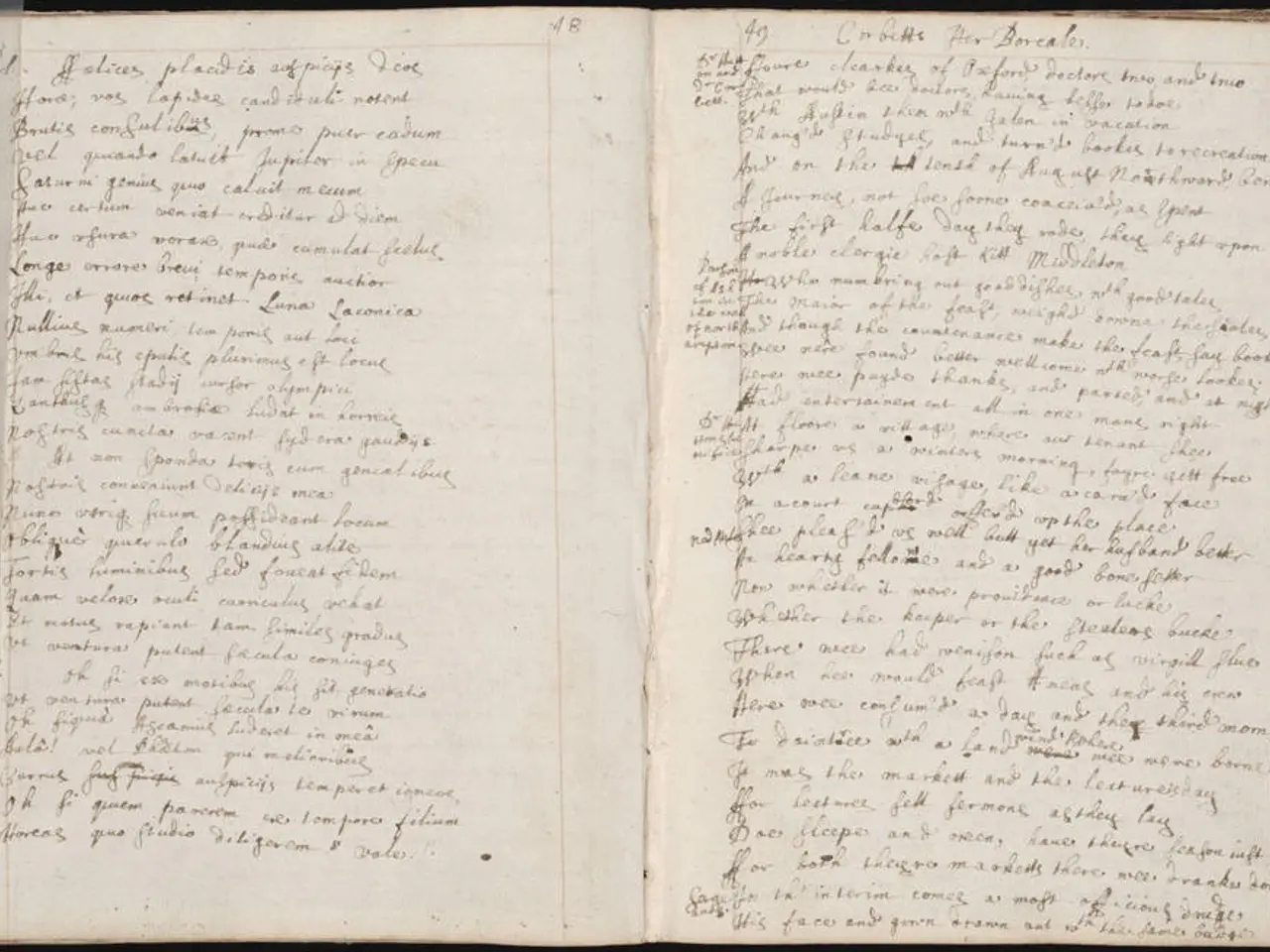Genetic links to breast cancer: Is it possible for this condition to bypass a generation?
In the realm of breast cancer, a significant portion of cases can be attributed to inherited genetic factors. The most common genes linked to this increased risk are BRCA1 and BRCA2 [1][2][3].
Mutations in these genes impair their normal role as tumor suppressors, failing to repair damaged DNA. This leads to uncontrolled cell growth, increasing the likelihood of breast cancer, as well as other cancers such as ovarian and pancreatic cancer [1][2][3].
Other genes associated with inherited breast cancer risk include ATM, TP53, PALB2, CHEK2, and PTEN. For instance, a faulty PALB2 gene, which interacts with BRCA1/2, results in a 30–40% lifetime risk of breast cancer [2].
Individuals carrying these mutations face a significantly increased lifetime risk of breast cancer, with BRCA mutations conferring about a 10-fold higher risk than average [3]. They also tend to develop breast cancer at an earlier age compared to those without mutations [4].
Beyond breast cancer, the presence of such mutations increases the risk for other cancers, such as ovarian, pancreatic, and possibly rare lymphoma linked to breast implants in BRCA1/2 carriers [1][2][4][5].
Moreover, the presence of these mutations may influence the cancer's molecular subtype and sensitivity to specific therapies. For example, breast cancer in BRCA mutation carriers is often HER2-negative, and they may respond well to PARP inhibitors like Olaparib [3].
For people with mutated BRCA genes, premenopausal removal of their ovaries and fallopian tubes can reduce breast cancer risk by 50% and ovarian cancer risk by 85-95% [6].
If a person is concerned that they may have inherited a breast cancer gene, they should speak with a doctor. A doctor may suggest genetic counseling, which can help individuals understand their risks and explore options for risk reduction [7].
If a person is found to have inherited a gene that causes breast cancer, they have a 50% chance of passing it on to their children [8].
In addition, there are certain medications that can help reduce a person's chances of developing hormone receptor-positive breast cancer. These medications include tamoxifen, raloxifene, exemestane, and anastrozole [9].
It's essential to remember that inherited genetic factors do not cause the majority of breast cancers. Having a family history of breast cancer can increase a person's chances, but most cases occur due to a combination of genetic and environmental factors [10].
References:
[1] National Cancer Institute. (2021). Breast Cancer Risk Factors. Retrieved from https://www.cancer.gov/about-cancer/causes-prevention/risk/risk-factors/breast-cancer-risk-factors
[2] National Human Genome Research Institute. (2021). Breast Cancer: Gene Reviews. Retrieved from https://www.genome.gov/genetics-genomics/genetic-disease/breast-cancer-genetics
[3] Breast Cancer Now. (2021). BRCA1 and BRCA2 genes. Retrieved from https://www.breastcancernow.org/information-support/treatment/genes-and-treatment/brca1-and-brca2-genes
[4] American Cancer Society. (2021). What Are the Risk Factors for Breast Cancer? Retrieved from https://www.cancer.org/cancer/breast-cancer/causes-risks-prevention/risk-factors.html
[5] Mayo Clinic. (2021). Breast cancer risk factors: What increases your chances of breast cancer? Retrieved from https://www.mayoclinic.org/diseases-conditions/breast-cancer/in-depth/breast-cancer-risk-factors/art-20048386
[6] National Cancer Institute. (2021). Risk-Reducing (Prophylactic) Mastectomy. Retrieved from https://www.cancer.gov/types/breast/patient/risk-reducing-mastectomy-pdq
[7] National Cancer Institute. (2021). Genetic Counseling and Testing. Retrieved from https://www.cancer.gov/about-cancer/causes-prevention/genetics/genetic-counseling-testing
[8] American Cancer Society. (2021). What is hereditary breast cancer? Retrieved from https://www.cancer.org/cancer/breast-cancer/causes-prevention/hereditary-breast-cancer.html
[9] National Cancer Institute. (2021). Chemotherapy for Breast Cancer Prevention. Retrieved from https://www.cancer.gov/types/breast/patient/risk-reducing-chemotherapy-pdq
[10] American Cancer Society. (2021). What is the outlook for women with breast cancer? Retrieved from https://www.cancer.org/cancer/breast-cancer/detection-diagnosis-staging/what-is-the-outlook-for-women-with-breast-cancer.html
- Science has linked several genetic factors, such as BRCA1, BRCA2, ATM, TP53, PALB2, CHEK2, and PTEN, to an increased risk of breast cancer, adding to the understanding of health-and-wellness issues related to medical-conditions like cancer.
- People who inherit mutations in BRCA1 or BRCA2 genes, key players in cancer prevention, have a significantly higher risk of breast cancer than those without mutations, along with an increased risk for other cancers like ovarian and pancreatic cancer.
- Carrying a faulty PALB2 gene, which interacts with BRCA1 and BRCA2, may lead to a 30–40% lifetime risk of breast cancer, highlighting the inherited genetic factors' impact on the prevalence of breast cancer and health-and-wellness outcomes.




